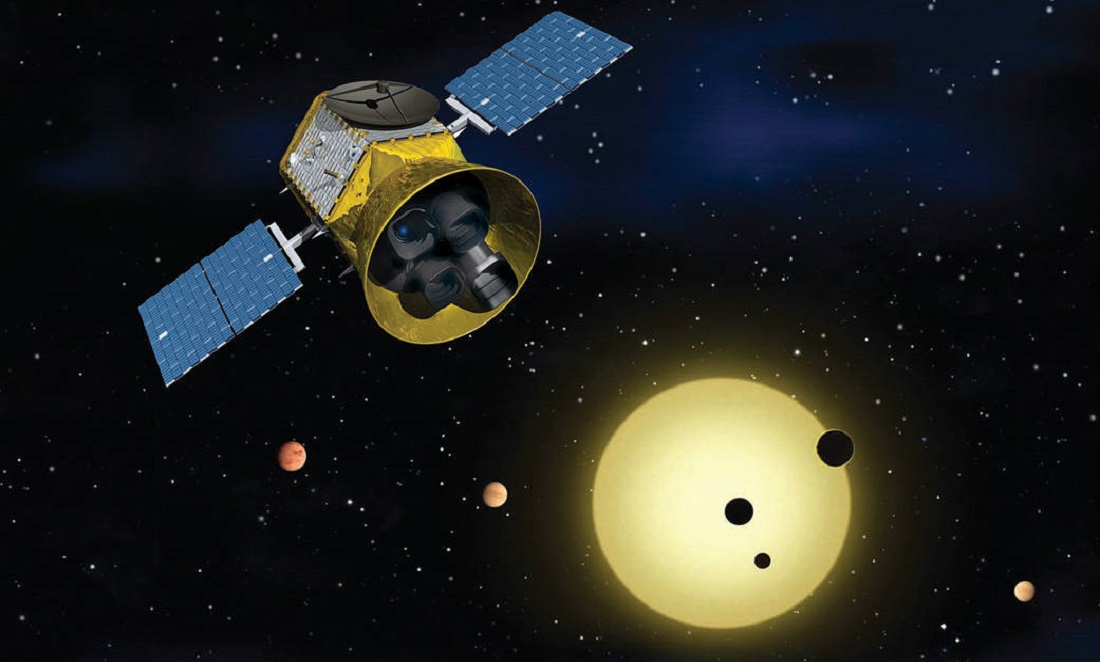The launch of a new space observatory, searching for planets beyond our Solar System, may be able to provide the answer.
The Transiting Exoplanet Survey Satellite (TESS) is being rocket launched by NASA next month.
Two years to discover thousands of planets
In its 2-year mission, it’s hoped TESS will discover thousands of exoplanets in orbit around some of the brightest stars in the night sky.
It will do this by monitoring more than 200,000 stars for temporary drops in brightness with its four identical cameras.

These drops are caused by a planet moving in front of its parent star when viewed from Earth.
Once detected, detailed measurements of the planets will be performed.
This will include planet masses, sizes, densities and atmospheric properties.
It will survey planets ranging from Earth-sized to gas giants in a wide range of star types and different orbits.
TESS is expected to record more than 1500 exoplanet candidates, including a sample of around 500 Earth-sized and ‘Super Earth’ ones.
Expert team on the job
There’s quite a team working towards getting TESS off the ground.
The Massachusetts Institute of Technology (MIT) is leading the project and handles the cameras that make up TESS.
Orbital ATK (OA) builds and operates the spacecraft from the OA Mission Operations Center.
NASA’s Goddard Space Flight Center looks after project management, systems engineering, safety and mission assurance.
Analysis of the scientific data will take place at the TESS Science Center.
This is a partnership among MIT’s Physics Department and Kavli Institute for Astrophysics and Space Research as well as the Smithsonian Astrophysical Observatory and the NASA Ames Research Center.
A TESS Guest Investigator programme has been set up to allow the community to participate in science investigations using TESS. Many teams have proposed 2-minute cadence targets for analysis and full-frame image data.
All data will be made available through the Mikulski Archive for Space Telescopes (MAST) public archive once data processing and validation is complete.

Australian poised to follow up on discoveries
Curtin University’s radio astronomy expert Dr Steven Tingay says TESS follows on from the Kepler Project.
“This project revolutionised the study of planets outside our Solar System.”
He says Curtin Uni has been using radio telescopes to look at exoplanets and to search for signs of intelligent life at radio wavelengths.
“This work has used the Murchison Widefield Array (MWA), and we will continue it with the Square Kilometre Array (SKA) when it is built.”
“So, we will be very interested in looking at what TESS discovers—if it finds good Earth-like candidates close to our Solar System,” Steven says.
Australian telescopes and astronomers are well placed to help follow up discoveries in detail.
Especially for the objects found in the southern hemisphere.
“We have a strong history in exoplanet research, as well as cutting-edge optical and radio telescopes to do the work,” he says.
He says Australia is now a partner in the European Southern Observatory (ESO).
“Australian astronomers will probably use ESO facilities in Chile to undertake detailed follow-up.”
If you are as eager as we are to see what TESS discovers, you can follow the results on the TESS Facebook page.









